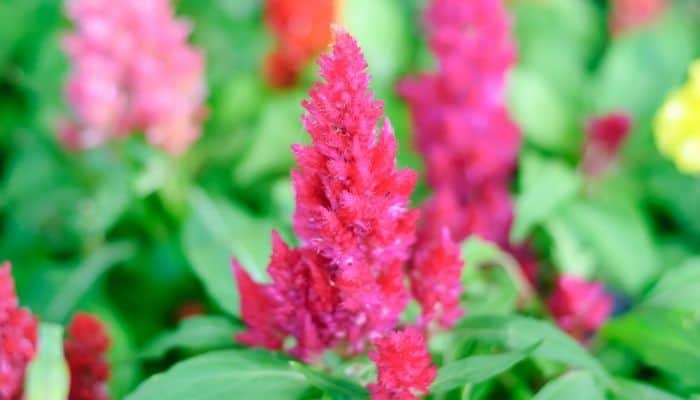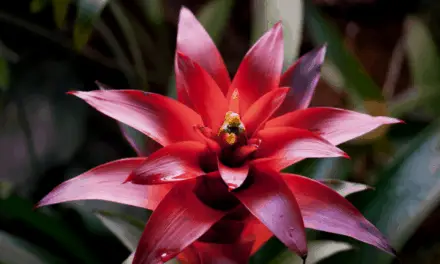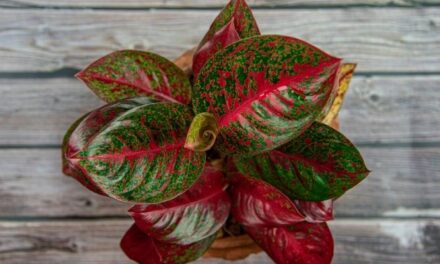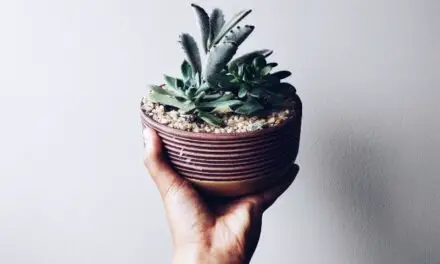Celosia is a gorgeous edible plant with origins in South America, Africa, Asia, and the West Indies.
These flowering annuals are famous for their bright colors but as they age or if their care isn’t just right, their blooms tend to lose their vibrant colors.
In this article, we’ll be talking about why celosia blooms fade and how you can keep yours blooming for the longest time possible.
Table of Contents
Why Is My Celosia Fading?

There are a few reasons why a celosia might fade, such as pests, fungal attacks, age, stress, over-watering, or under-watering.
It might not be getting enough sunlight, or it may just be that the flowers have reached the end of their natural life and are dying back.
The celosia’s annual flowers can last for up to ten weeks, so if the blooms have been around for a while, they may just be dying back naturally.
What Can I Do To Stop My Celosia Fading?
To stop fading in the plant, you’ll need to determine why it is fading in the first place.
That might sound obvious, but as there are many possible causes for fading, it’s important to determine what’s going wrong.
Give Your Celosia Enough Direct Sun
If your celosia doesn’t get the right amount of sun, its flowers may begin to fade sooner or not bloom as vibrant.
These plants love sunny conditions and display their most vibrant colors when given at least eight hours of full sun each day.
Related Article: Will Wisteria Flower In Shade? (All You Need To Know)
Plant Your Celosia In Fertile, Well-Drained Soil
Celosia plants do best in airy, well-draining, and fertile soil that has been amended with lots of organic matter, such as wood by-products, peat, or compost.
Water Your Celosia Properly
If you want to keep vibrant flowers for longer, watering is probably the most crucial part of the care that you will have to get right.
Water celosia only enough to keep the soil from completely drying out.
Test the top inch of soil with your finger and when it feels dry you can give some water.
If the soil feels any bit moist you can hold off on watering for a day or so and test again.
Ensure the pot has good drainage so that the soil and plant roots can dry out between watering.
Celosias do not like wet feet.
If you keep them anywhere where water accumulates or where their soil cannot dry out between watering times, these plants will not do well at all.
Check For Pests On Your Celosia
Once everything else seems okay, check your plant for pests.
If little creatures are draining your plant’s sap and energy, they are likely to be causing it to fade.
Mites are a common pest, and you can find them by putting a piece of paper under your plant and giving it a gentle shake.
The mites should drop onto the paper.
To get rid of mites, direct a strong stream of water at your plant with a hose, aiming at the crevices and undersides of the leaves.
This should be enough to blast the mites away.
Fungal infections
Alternatively, if you can see brown spots or holes in your celosia’s leaves, it’s possible that it has a fungal infection.
This, if it gets serious, could kill your plant, so you will probably need to treat it.
Use Copper Fungicide
Use a commercial copper fungicide to get rid of it if necessary, preferably before it weakens the plant too dramatically.
Increase Airflow And Keep Your Celosia Dry
You should also increase the airflow around your plant, and make sure it’s in a nice, sunny spot.
This should discourage the fungus and help restore the plant to health.
Cut back other plants around the celosia to promote good airflow and decrease the chances of fungus spreading.
Check For Rot
Fungi can also cause rot in your plant’s stem.
Gray-black spots on the stem, usually during hot weather after a period of wet weather, are indicative of stem rot, and if left untreated, your plant will certainly start to fade and die.
The rot will work its way through the whole stem, killing the plant.
If your celosia is fading, inspect its stems closely for the spots that could indicate this sort of disease.
You may see brown cankers on the stems, and the leaves will wilt.
Again, put your plant somewhere sunny, and increase the amount of air circulation around it.
You may need to trim some stems to improve the airflow.
There aren’t any commercial treatments, but try to avoid splashing the stem when you water the plant.
Instead, aim to water the soil around the plant, and let it soak up to the plant instead.
You can improve the health and color of your plant by checking its general needs; make sure it is not too wet or too dry, and check that it is getting enough light.
They like full sun and dry soil, and if they don’t have these things, stress can cause them to fade fast.
Stress also makes them vulnerable to pests and diseases, which will increase the problems with their bright colors.
How To Promote Flower Growth On Your Celosia
Deadheading your celosia about once a month during summer will encourage new flowers.
Remove old flowers as they begin to fade or turn brown and lose color.
This will encourage loads of growth, but at the end of the year (in the fall), deadheading won’t produce more blooms and doesn’t need to be done.
Celosia flowers usually last for just over two months (sometimes three), so if you’re noticing fading after about ten weeks, it’s probably because the flowers are over.
They are not very cold-resistant, so if it is losing color at the end of the year, it may be because it is dying.
Hopefully, your plant will have re-seeded itself and you will get new plants in the spring.
If not, you can re-plant with fresh plants, and they should have their full color, especially at the start of the year.
Conclusion
Celosia usually fade because they are under attack from pests, they have a fungal infection, or they are stressed by unsuitable conditions.
However, fading could also be caused by the plant dying at the end of the season.




